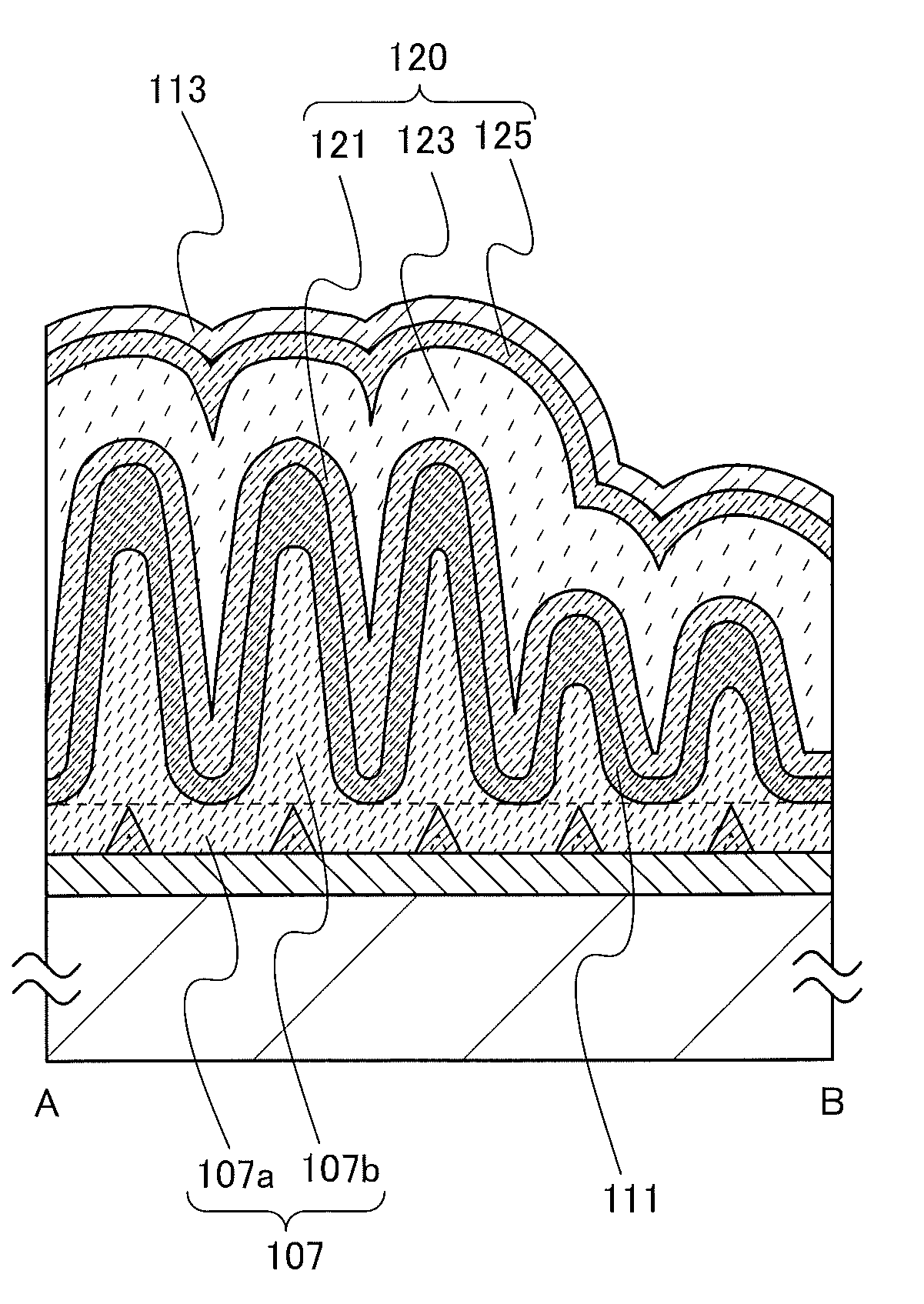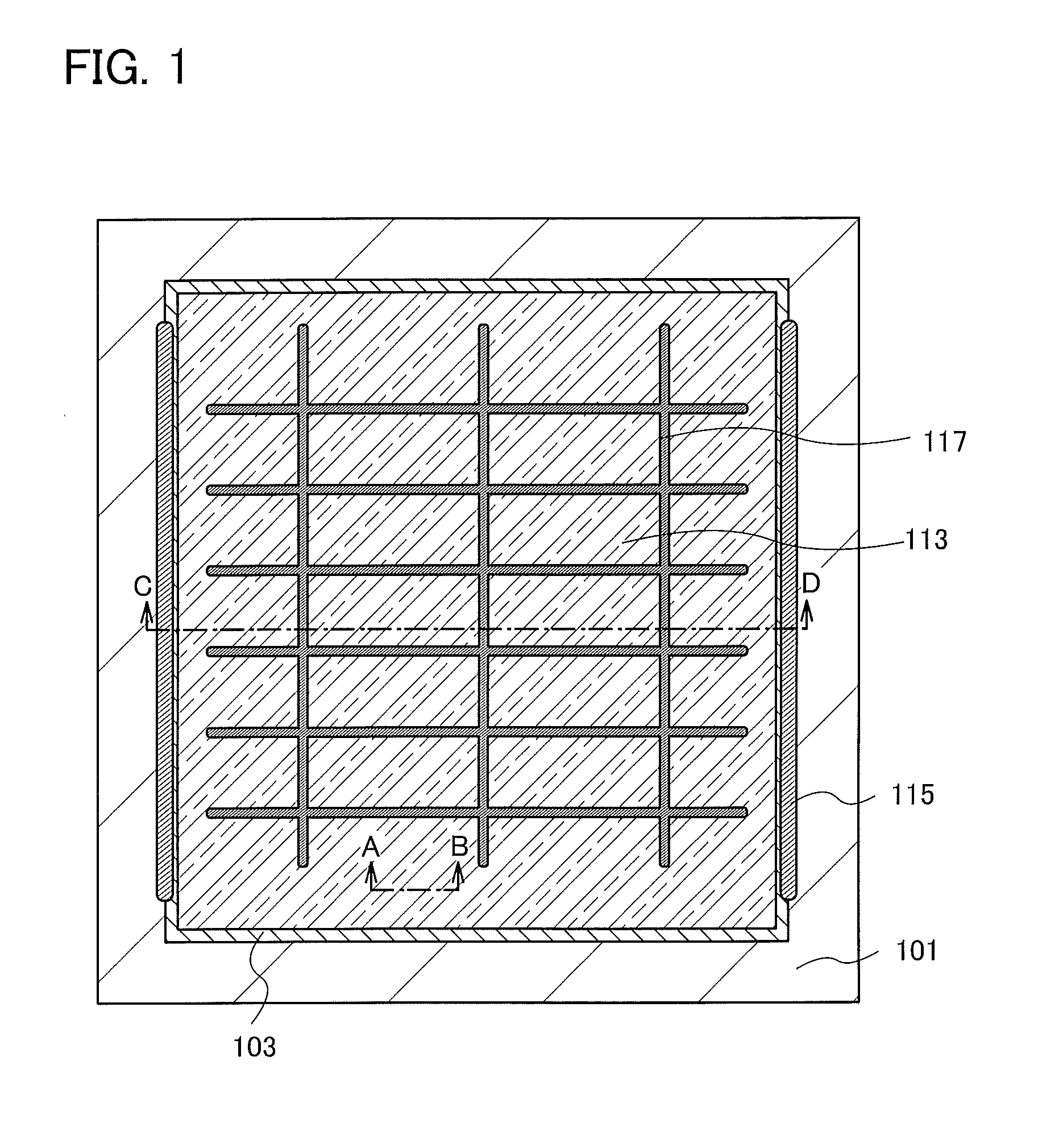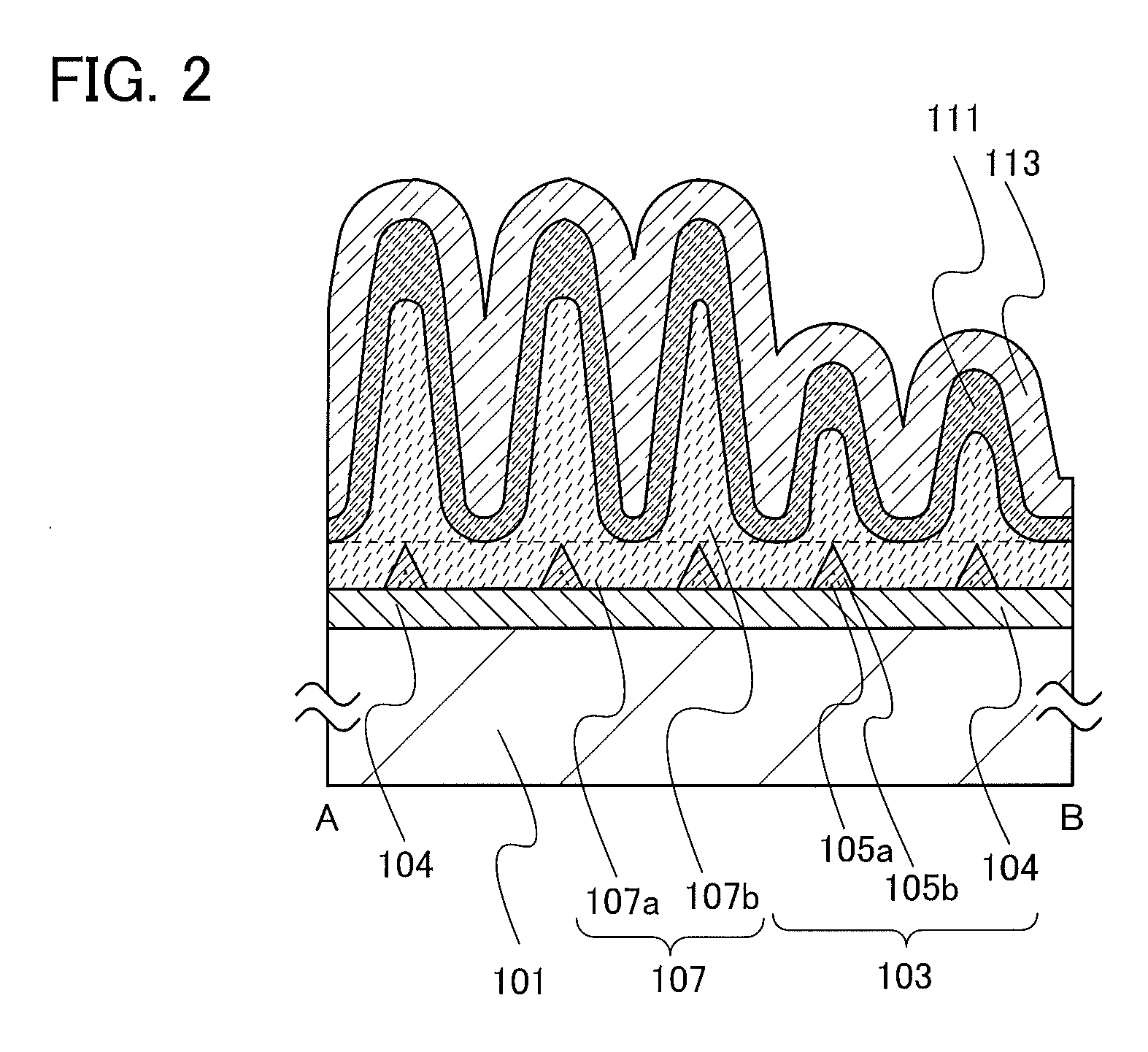Photoelectric conversion device and method for manufacturing the same
- Summary
- Abstract
- Description
- Claims
- Application Information
AI Technical Summary
Benefits of technology
Problems solved by technology
Method used
Image
Examples
embodiment 1
[0044]In this embodiment, a structure of a photoelectric conversion device which is one embodiment of the present invention is described with reference to FIG. 1, FIG. 2, FIG. 3, FIG. 4, and FIGS. 5A to 5C.
[0045]FIG. 1 is a schematic view of a top surface of a photoelectric conversion device. Although not illustrated, a photoelectric conversion layer is formed over an electrode 103 which is formed over a substrate 101. Further, an auxiliary electrode 115 is formed over the electrode 103 and a grid electrode 117 is formed over a second-conductivity-type crystalline semiconductor region. The auxiliary electrode 115 functions as a terminal for extracting electric energy to the outside. The grid electrode 117 is formed over the second-conductivity-type crystalline semiconductor region to reduce resistance of the second-conductivity-type crystalline semiconductor region. Here, a cross section of a dashed-and-dotted line A-B in FIG. 1 is described with reference to FIG. 2, FIG. 3, FIG. 4,...
embodiment 2
[0096]In this embodiment, a photoelectric conversion device in which the size of a second conductive layer and the size of a mixed layer are different as compared to those in Embodiment 1 is described with reference to FIG. 7 and FIG. 8.
[0097]The cross section of the dashed-and-dotted line A-B in FIG. 1 is described with reference to FIG. 7 and FIG. 8.
[0098]FIG. 7 is a schematic view of a photoelectric conversion device including the substrate 101, the electrode 103, a first-conductivity-type crystalline semiconductor region 110, and a second-conductivity-type crystalline semiconductor region 112. The second conductivity type is opposite to the first conductivity type. The first-conductivity-type crystalline semiconductor region 110 and the second-conductivity-type crystalline semiconductor region 112 function as a photoelectric conversion layer.
[0099]In this embodiment, the electrode 103 includes the first conductive layer 104, a plurality of second conductive layers 153a formed ov...
embodiment 3
[0111]In this embodiment, a method for manufacturing a photoelectric conversion layer which has fewer defects than the photoelectric conversion layer in Embodiment 1 is described.
[0112]After one or more of the first-conductivity-type crystalline semiconductor region 107, the first-conductivity-type crystalline semiconductor region 108, the first-conductivity-type crystalline semiconductor region 110, the crystalline semiconductor region 109, the second-conductivity-type crystalline semiconductor region 111, and the second-conductivity-type crystalline semiconductor region 112, which are described in Embodiments 1 and 2, are formed, the temperature of a reaction chamber in an LPCVD apparatus is set at a temperature of higher than or equal to 400° C. and lower than or equal to 450° C., introduction of a source gas into the LPCVD apparatus is stopped, and hydrogen is introduced. Then, in a hydrogen atmosphere, heat treatment at a temperature of higher than or equal to 400° C. and lower...
PUM
| Property | Measurement | Unit |
|---|---|---|
| Temperature | aaaaa | aaaaa |
| Length | aaaaa | aaaaa |
| Length | aaaaa | aaaaa |
Abstract
Description
Claims
Application Information
 Login to View More
Login to View More - R&D
- Intellectual Property
- Life Sciences
- Materials
- Tech Scout
- Unparalleled Data Quality
- Higher Quality Content
- 60% Fewer Hallucinations
Browse by: Latest US Patents, China's latest patents, Technical Efficacy Thesaurus, Application Domain, Technology Topic, Popular Technical Reports.
© 2025 PatSnap. All rights reserved.Legal|Privacy policy|Modern Slavery Act Transparency Statement|Sitemap|About US| Contact US: help@patsnap.com



